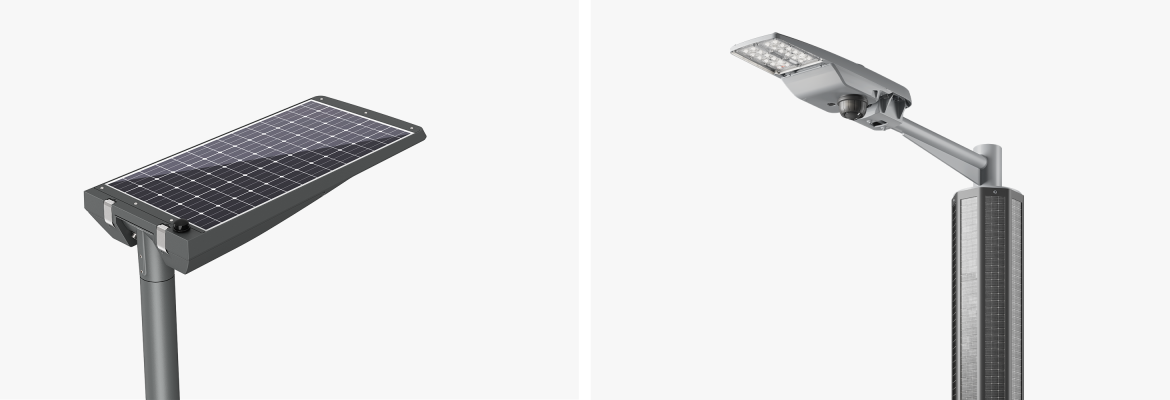How solar lighting can benefit the rail industry
August 2024
August 2024
OPINION
Lighting is an important consideration for the rail sector, not only within station buildings and on platforms but also in the areas around the station. However, achieving this in the most cost-effective and sustainable way can be challenging — until now, as Des Wilkinson, Business Development Manager for Rail at DW Windsor, explains.
With people often accessing train stations during the hours of darkness, especially during the short days of the winter, it is important that they can do so safely. Correctly designed, high-quality lighting is essential in the areas surrounding the station, such as footpaths, approaches and car parks.
There are over 2,500 railway stations in the UK, and small and medium-sized stations account for around 80% of the total. The network also consists of 20,000 miles of track, and many of the areas that require lighting, such as track-side storage facilities, are located away from other infrastructure. This means there are often challenges associated with achieving a cost-effective solution, such as supplying electricity to luminaires where the required capacity or infrastructure does not already exist, particularly in more rural and remote locations. There is also the cost and carbon impact of energy usage that should be considered.

Solar lighting offers a flexible solution that can help to solve these issues. Solar power is an abundant, limitless and currently underutilised source of clean energy. In fact, every hour, the amount of energy that reaches Earth from the sun is greater than the whole world consumes in a year. Even in the UK, there are sufficient levels of direct normal irradiation – the measure of the solar radiation an area receives – to make solar a viable source of power for certain applications. This is especially true for the south, south-west and east of the UK.
A solar lighting installation typically consists of an LED light source, photovoltaic (PV) cells, a battery unit for energy storage and a control system. Advances in the efficiency of both PV cells and LEDs mean solar lighting is now suitable for a wider range of applications as more energy can be generated from solar radiation with less energy needed to provide the required levels of illumination.
The benefits of solar lighting
One of the major challenges associated with any new lighting installation often relates to getting power to the luminaire. However, a major benefit for the rail industry is that solar lighting does not require cabling or connection to the electricity grid.
This means that where new lighting is required, significant cost savings can be achieved by avoiding the often very high cost of digging trenches and laying supply cables, especially around stations. Solar lighting is also ideal for remote locations, as the self-contained lighting units provide a cost-effective option without the impracticality and high costs of providing a mains electrical supply to the area.
Another key benefit to solar is that, once installed, the energy is essentially free. While there is, of course, an investment required for the initial installation, the reduction in operating costs can help offset this, especially as energy prices are predicted to remain relatively high over the coming years. With this decrease in energy usage also comes a reduction in the carbon footprint of the station or site, which is increasingly important given the drive for net zero.
One of the major challenges associated with any new lighting installation often relates to getting power to the luminaire. However, a major benefit for the rail industry is that solar lighting does not require cabling or connection to the electricity grid.
Solar lighting for the Rail sector
Given the understandably strict lighting requirements for certain areas of the rail network, solar lighting cannot be used for every application, such as where light levels must be guaranteed. For example, areas that receive insufficient sunlight due to geographical location or shading from buildings and trees may not generate enough power for solar lighting to function. However, there is still a wide array of possible applications for solar lighting in the rail environment. These include:
Types of solar lighting
For rail applications, a range of solar lighting options is available to suit different requirements. These include standalone solar lanterns with integrated solar panels and modular solar systems that can be tailored to specific applications.
Standalone solutions, such as DW Windsor’s column-mounted Sierra Solar luminaire, feature built-in solar panels, batteries, and control units, making them easy to install and ideal for more simple installations, such as footpaths or storage areas. However, with a fixed panel size, they may not be suited to more demanding applications.

In this instance, a solar system may be more appropriate. DW Windsor’s Torino Sleeve is a scalable solution which mounts vertically on the column and features wraparound photovoltaic panels to maximise solar absorption regardless of orientation. The major benefit of a solar system is that it can be expanded to suit the individual requirements of a lighting scheme. For example, Torino Sleeve is available in three panel sizes from 100W to 200W and can be specified with three battery sizes up to 920Wh. Torino Sleeve can also be paired with a range of DW Windsor flagship luminaires, including Kirium Pro S.
At DW Windsor, regardless of which solution you choose, we have engineered our solar lighting products to maximise performance. In addition to high-quality LED light sources, our solar range features monocrystalline PV panels, as these offer a higher efficiency compared to other solar panels. We also use lithium iron phosphate (LiFePO4) batteries due to their higher energy density and longer lifespan than other battery types. All our solar products also include advanced lighting controllers to optimise energy use and are fitted with PIR motion sensors to deliver the right light levels at the appropriate time.
In summary, Solar lighting offers a practical and sustainable option for rail operators, whether they want to reduce energy costs or overcome a logistical challenge to a new lighting installation.